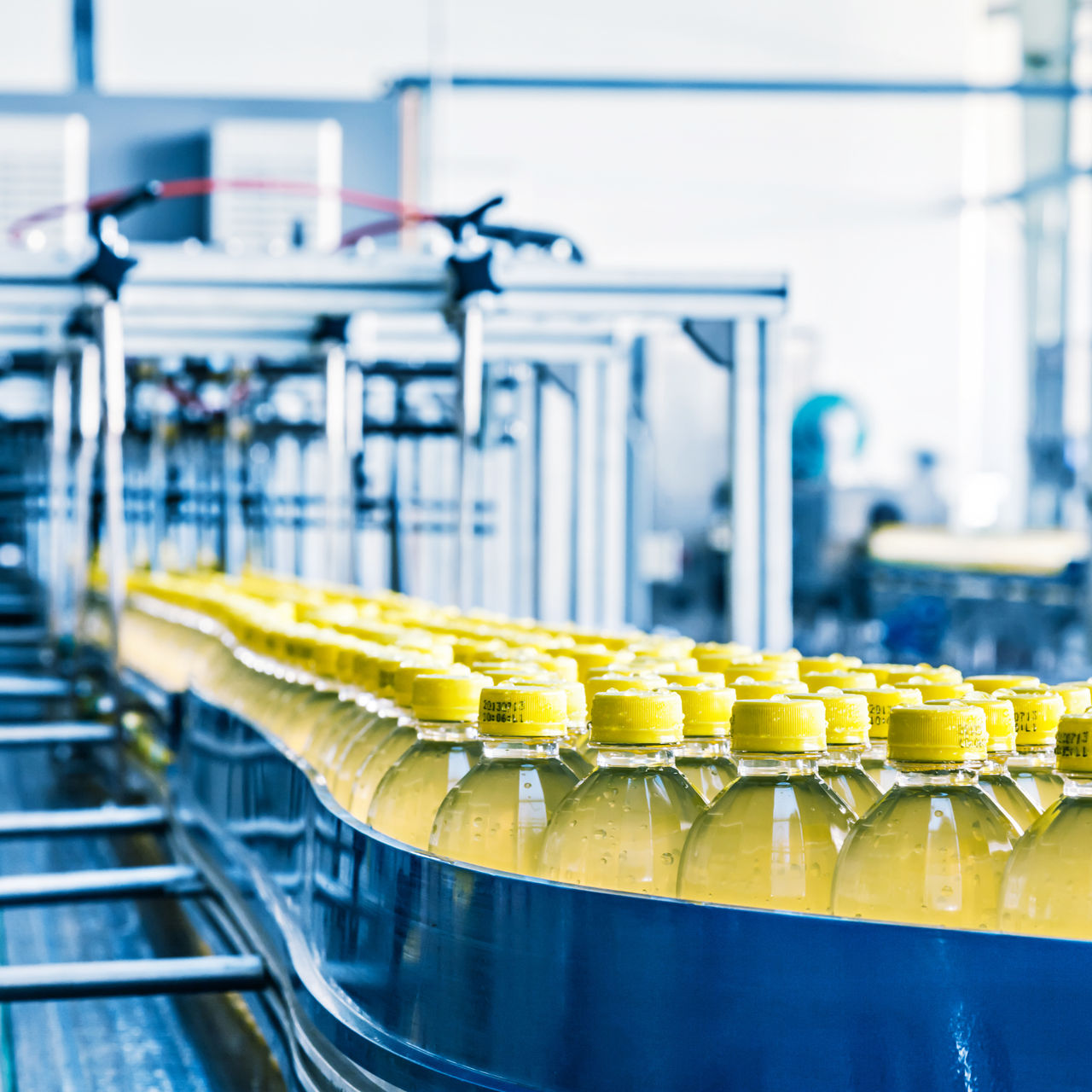In this article
Maximize your conveyor belt efficiency for food safety
In the market, our Application Engineers receive many questions about the food safety of conveyor systems. For reasons of cost reduction, conveyor systems often only meet the minimum requirements for food safety. Sub-optimal quality, however, potentially entails much higher costs in the long run. According to a joint industry study, a food recall can cost an average of $10 million in direct costs. To minimize unplanned downtime, food manufacturers should seek a food-safe conveyor that allows them to anticipate maintenance issues in order to maximize conveyor belt efficiency.
Obtain food safety certifications for your conveyor belts
The European Union requires that food manufacturers certify each food contact material to comply with the food safety standards before their products are distributed to the public. The EC 1935/2004 regulation regulates both the manufacturing of food and the manufacturing of equipment used in food processing. Separate certificates are required to ensure that the materials and articles do not transfer to the food during production.
Each certification should include material and traceability data, a Declaration of Compliance (DOC) statement, declaring that their products abide by certain regulations.
Hans Venema, Application Engineer at ERIKS, explains using one of ERIKS suppliers as an example. “Our suppliers produce flat belts in a width of approximately 5 meters on rolls that could be 500 meters long. Those rolls then get divided into smaller belts that we install on our conveyors. According to the GMP (Good Manufacturing Practice) and the EC regulations, we need to make certifications for each step in that process. So, we are able to trace back each specific conveyor belt to its original manufacturing batch and raw materials.”

Prepare for a food safety audit
Why have a specific certificate for each component material and part if you already have a Declaration of Compliance (DOC)? A DOC or compliance certificate is a self-issued document that serves as a base document to fulfill legal obligations that apply to certain groups of materials and articles such as plastics. Hans uses a simple metaphor to explain the relationships between DOC and specific certifications.
“It is like you are baking a cake at home. You can always use the same recipe, but the ingredients need to be bought again, just like the specific certification for each component. The declaration of Compliance here is like a (certified) recipe, which says that this recipe is compliant with food regulations”
Many companies obtain a DOC as their only food safety certificate to demonstrate that their products follow food safety regulations. However, the certification of specific component materials allows for tracing back to the raw materials when conducting a safety audit and ensures compliance with other requirements. This also helps companies to reduce unplanned downtime and save money because it allows you to identify the root cause without the need to halt all production.
Nevertheless, in case of an advance audit, it is sufficient to have the Declaration of Compliance as Hans notes, “In many cases, people will find no problem with the conveyor belt before they replace it with another one. Then paying for a (specific) certification is not necessary because the declaration of compliance on the base material of the belt is still the same."
Identify the chemical resistance of various belt types and materials
Incompatible materials or residual chemicals on conveyor belts can cause indirect cross-contamination in food production. Hence, the first step towards a food-safe conveyor system is to ensure that the materials in the conveyor belts comply with food safety standards. Some food products may contain substances that are incompatible with conveyor belt chemicals.
Cheese, for instance, which is often 60% to 80% fat, can affect the plastics found in conveyor belts in the long run. Materials incompatible with products like this can shorten the lifespan of the conveyor belts as they wear prematurely. The same applies to conveyor belts used in the manufacture of cookies, which require fat-resistant conveyor belts.
Most people nowadays want a blue conveyor belt, simply because blue is not a natural color for food. So, it makes visual detection very easy. Yet, despite their convenience for visual detection, blue conveyor belts may also pose contamination risks if they are not chemically resistant. One such example is that white fish filets can become contaminated with blue color. That is why it is critical to strike a balance between convenience and food safety.

Choose the optimal cleaning method for your conveyor belts
“The right cleaning not only prolongs the life of your conveyor belts and the gears, but it also ensures that the product that you supply to your customers is safer.”
It is crucial for manufacturers to keep conveyors and their appendices clean in open plant cleaning. One of the common but preventable mistakes is leaving chemical residues on the conveyor belt. Indeed, Hans observes that “the biggest problem besides the influence on the conveyor belt itself is remaining residue. It is something that manufacturers should prevent before production restarts, as it could cause some serious health problems."
To avoid this, conveyor belt materials must be able to withstand the chemicals in cleaning products. Without chemical resistance, conveyor belts can be contaminated by chemicals in cleaning agents, such as peroxide, isopropyl alcohol, or chlorine. Consequently, plastics or other chemicals may transfer into food as residuals.
For example, wear and tear on conveyor systems can be accelerated when the plastic conveyor belts are not resistant to the cleaning agent. In this case, the conveyor belts should be replaced by a new system made of a material that is resistant to the cleaning agents. This has to be tested in the laboratory to ensure the wear is kept to a minimum level.
Conveyor belts require specialized cleaning methods based on the industry segment. For example, compressed air can be used between production runs with minimal or no cleaning agents, thereby reducing maintenance downtime. Baking and dough industries commonly use sterilization in place or steam in place (SIP) because it kills 99.9% of germs on conveyor belts while preventing the dough from coming into direct contact with liquid residues.
However, SIP does require more attention to the level of cleaning as noted by Hans: You need to ensure that you've touched all the conveyor belt surfaces using a pressure washer to hose down a conveyor belt. If you use compressed air with a blowing nozzle, you need to make sure that you clean the entire belt.”
Expert guide
A food-safe conveyor solution requires expert inspection and analysis to prevent minor but important maintenance issues. The solution process usually begins with an on-site inspection of the conveyor belts to detect cross-contamination risks. Next, the specialists should conduct chemical resistance testing against cleaning agents, followed by a thorough analysis of the results.
In one instance, mold growth was discovered in the open surface conveyors of a cheese warehouse of one of the largest dairy companies, along with cleaning agents found leaking from plasticize machines. To keep mold growth and leaking to a minimal level, the company needs closed conveyor belts with better chemical resistance against the used cleaning agent.
With the help of ERIKS conveyor specialists, chemical resistance against the used cleaning agents was established, mold growth and leaking were reduced to an absolute minimum, and the lifetime of conveyor belts was maximized. This food-safe conveyor solution achieved substantial annual savings of 3130 euros for that specific conveyor belt and approximately 60,000 euros per cheese warehouse.
On the operational level, this food-safe conveyor solution also reduced the time spent on cleaning the belts. The system also ran more smoothly than before due to the better-suited belt drive sprocket.
Conclusion
Food-safe conveyors are energy-efficient, reducing operational costs and environmental impacts and extending the lifespan of the conveyor and its drive system. Food-safe conveyors will not only save you time and money from unexpected occurrences but also allow you to build customer trust and confidence in the products and services you provide. Consult a conveyor specialist to determine the best food-safe conveyor solution based on the condition of your installation.



